High Performance Computing
- Return to High Performance Computing
About HPC
INL’s HPC resources provide scientific computing capabilities to support efforts in advanced modeling and simulation. These resources support a wide range of research activities, including multiscale multi-physics performance analysis of nuclear fuel, materials in harsh environments, and existing light water and advanced nuclear reactors.
INL HPC computing resources are available to industry, universities, national laboratories and federal agencies to support published and openly available research and development. Access is generally granted for research related to the DOE Office of Nuclear Energy and INL’s mission areas.
Current Systems:

Sawtooth 2019 – Present
The Sawtooth supercomputer arrived at Idaho National Laboratory in 2019 and was named after the Sawtooth mountain range in Central Idaho. Funded by the Nuclear Science User Facilities at a cost of $19.2 million, Sawtooth boasts the capability to process 6 quadrillion floating-point calculations per second (6 PFLOPS). It achieved a ranking of #37 on the 2019 Top500 List. Sawtooth features 2,079 compute nodes. Each node is equipped with 48 cores and 192 GB of memory. Additionally, select nodes come with 4 NVIDIA V100 GPUs and an extra 192 GB of RAM, totaling 384 GB of memory per such node. Sawtooth offers a total memory capacity of 404 TB.
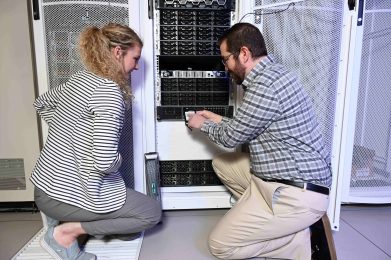
Hoodoo 2020 – Present
The Hoodoo supercomputer arrived at Idaho National Laboratory in 2021 and was named after the Hoodoo mountain range in Idaho. It is equipped with a Lambda Hyperplane deep learning distributed memory system with 44 NVIDIA A100 tensor core GPUs and 7.2 TB of total memory. The system provides a maximum performance of 429 TFLOPS double precision or 858 TFLOPS single precision.
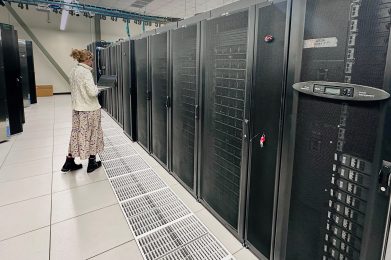
Bitterroot 2024 – Present
The Bitterroot supercomputer arrived at Idaho National Laboratory in June 2024. This system was sponsored by the Nuclear Science User Facilities and named after the Bitterroot mountain range on the Idaho-Montana border. Comprising 8 racks, Bitterroot had a total cost of $3.6 million. It has over 2 PFLOPS of performance and over 43,000 cores. It is a 43008-core Dell Commodity Technology Systems-2 (CTS-2) with 384 total nodes. Bitterroot offers 90 TB of memory.
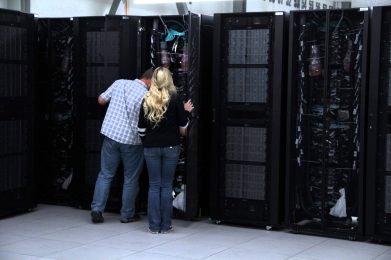
Wind River 2024 – Present
The Supercomputer Wind River arrived at Idaho National Laboratory in 2024. It was named after the Wind River Mountain Range in Wyoming. The system consists of 20 racks and was acquired for a total cost of $8.5 million. Wind River offers 5.3 PFLOPS of performance, 94,416 cores, and 843 nodes. There is 1,211 TB of memory total.
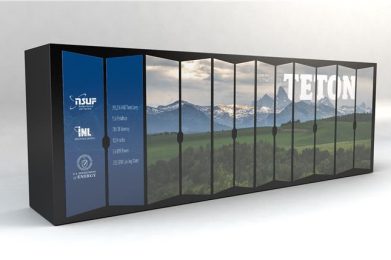
Teton 2025 – Present
The Teton supercomputer will arrive at Idaho National Laboratory (INL) in the summer
of 2025. Named after the Teton mountain range on the Idaho-Wyoming border,
this system was sponsored by the Nuclear Science User Facilities at a cost of $24 million. Teton will consist of nearly 400,000 compute cores, quadrupling the compute capacity of INL’s previously largest system, Sawtooth.
Retired Systems:
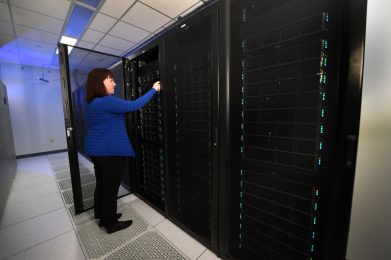
Lemh 2019 – 2025
The Lemhi supercomputer arrived at Idaho National Laboratory in 2019 and was named after the Lemhi mountain range in Eastern Idaho. The system consists of 8 racks and was acquired for a total cost of $4.5 million. Lemhi, along with Bitterroot and Wind River, are supercomputers at INL with an Omnipath (OPA) interconnect. Each node had 192 BG of RAM, 40 cores, and 94.5 TB of total memory. After providing six years of valuable service, Lemhi was decommissioned in January 2025.
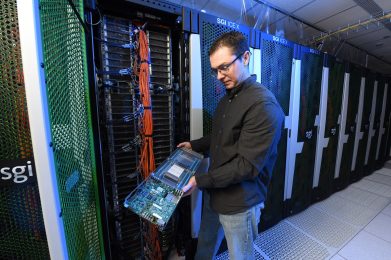
Falcon 2017 – 2022
Falcon was INL’s flagship cluster, delivering over 1 PFLOPS of performance. Installed in the fall of 2014, it offered approximately twice the performance of the previous large cluster, Fission, for most applications. Falcon was an SGI ICE-X distributed memory system. In 2017, Falcon underwent expansion and upgrades. On March 31, 2022, INL decommissioned the Flacon cluster and transitioned it to the Idaho State Board of Education.
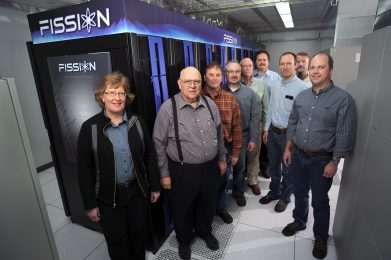
Fission 2011 – 2017
The Fission supercomputer was delivered to Idaho National Laboratory in 2011. The system consisted of 14 racks and was acquired for a total cost of $3.5 million. Fission had 391 nodes, 24.4 TB of total memory, and 360 kW of power. Each node had 32 cores, 920 W of power and 64 GB of RAM. After providing six years of service, Fission was decommissioned in 2017.


